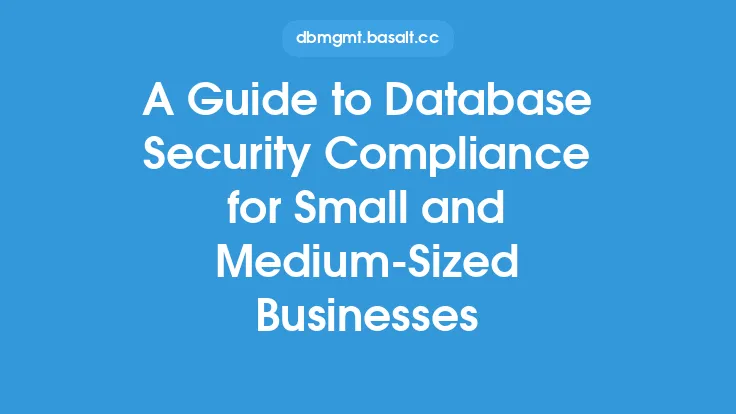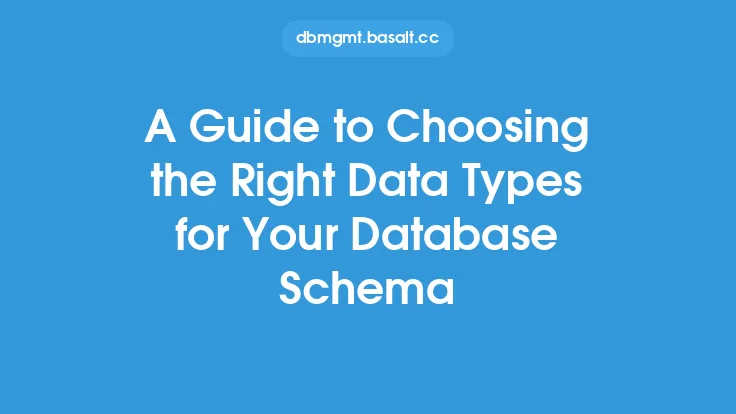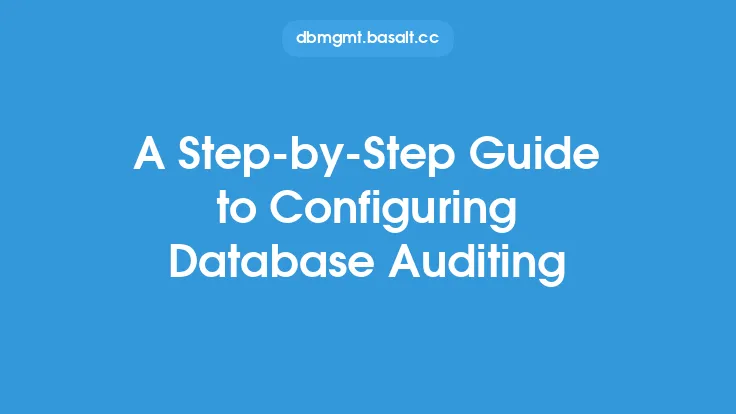Column-level encryption is a crucial aspect of database security that involves encrypting sensitive data at the column level, rather than at the database or table level. This approach provides an additional layer of protection for sensitive data, such as credit card numbers, social security numbers, and other personally identifiable information (PII). In this article, we will delve into the world of column-level encryption, exploring its benefits, implementation, and best practices.
What is Column-Level Encryption?
Column-level encryption is a data encryption method that involves encrypting specific columns within a database table, rather than the entire table or database. This approach allows organizations to protect sensitive data while still allowing access to non-sensitive data. Column-level encryption is particularly useful for organizations that need to comply with data protection regulations, such as the Payment Card Industry Data Security Standard (PCI DSS) and the General Data Protection Regulation (GDPR).
Benefits of Column-Level Encryption
Column-level encryption offers several benefits, including:
- Improved data security: By encrypting sensitive data at the column level, organizations can reduce the risk of data breaches and unauthorized access.
- Flexibility: Column-level encryption allows organizations to encrypt specific columns, rather than entire tables or databases, providing greater flexibility and control over data access.
- Compliance: Column-level encryption can help organizations comply with data protection regulations, such as PCI DSS and GDPR, by protecting sensitive data.
- Reduced risk: By encrypting sensitive data, organizations can reduce the risk of data breaches and the resulting financial and reputational damage.
How Column-Level Encryption Works
Column-level encryption typically involves the following steps:
- Identify sensitive data: Organizations must identify the sensitive data that needs to be encrypted, such as credit card numbers or social security numbers.
- Choose an encryption algorithm: Organizations must choose a suitable encryption algorithm, such as Advanced Encryption Standard (AES) or RSA, to encrypt the sensitive data.
- Generate encryption keys: Organizations must generate encryption keys to encrypt and decrypt the sensitive data.
- Encrypt the data: The sensitive data is encrypted using the chosen encryption algorithm and encryption keys.
- Store the encrypted data: The encrypted data is stored in the database, along with the encryption keys and other metadata.
Implementation of Column-Level Encryption
Implementing column-level encryption requires careful planning and execution. The following steps can help organizations implement column-level encryption:
- Assess the database: Organizations must assess the database to identify the sensitive data that needs to be encrypted.
- Choose an encryption solution: Organizations must choose a suitable encryption solution, such as a commercial encryption product or an open-source encryption library.
- Configure the encryption solution: Organizations must configure the encryption solution to encrypt the sensitive data, including generating encryption keys and setting up access controls.
- Test the encryption solution: Organizations must test the encryption solution to ensure that it is working correctly and that the encrypted data can be accessed and decrypted as needed.
Best Practices for Column-Level Encryption
The following best practices can help organizations implement and manage column-level encryption effectively:
- Use a secure encryption algorithm: Organizations should use a secure encryption algorithm, such as AES or RSA, to encrypt sensitive data.
- Use secure encryption keys: Organizations should use secure encryption keys, such as keys generated using a secure key generation process, to encrypt and decrypt sensitive data.
- Implement access controls: Organizations should implement access controls, such as role-based access control, to ensure that only authorized personnel can access the encrypted data.
- Monitor and audit: Organizations should monitor and audit the encrypted data to detect and respond to potential security incidents.
Challenges and Limitations of Column-Level Encryption
While column-level encryption provides an additional layer of protection for sensitive data, it also presents several challenges and limitations, including:
- Performance overhead: Column-level encryption can introduce performance overhead, particularly if the encryption and decryption processes are complex or resource-intensive.
- Key management: Column-level encryption requires careful key management, including generating, storing, and managing encryption keys.
- Data accessibility: Column-level encryption can make it more difficult to access and use the encrypted data, particularly if the encryption and decryption processes are complex or time-consuming.
Conclusion
Column-level encryption is a powerful tool for protecting sensitive data in databases. By encrypting specific columns, organizations can reduce the risk of data breaches and unauthorized access, while also improving compliance with data protection regulations. While column-level encryption presents several challenges and limitations, careful planning, implementation, and management can help organizations overcome these challenges and ensure the effective protection of sensitive data. As data protection regulations continue to evolve, column-level encryption is likely to play an increasingly important role in database security, providing organizations with a flexible and effective way to protect sensitive data.





